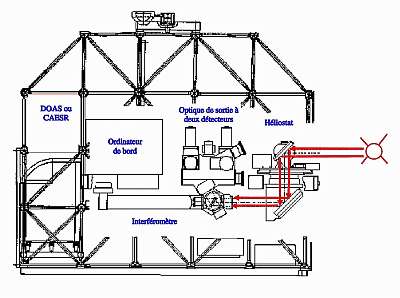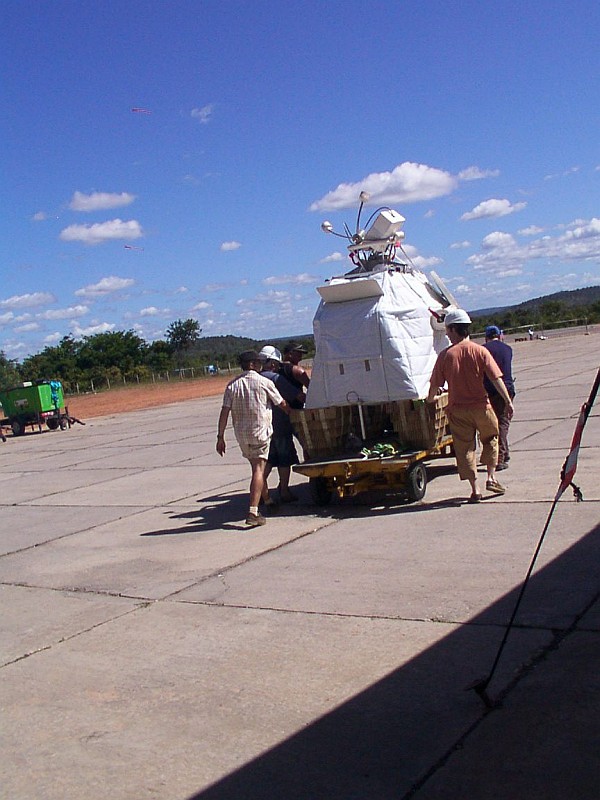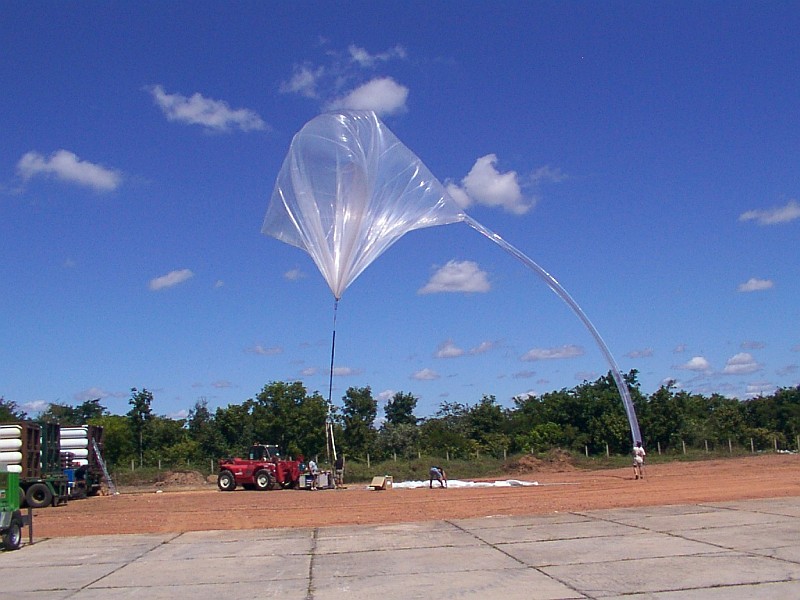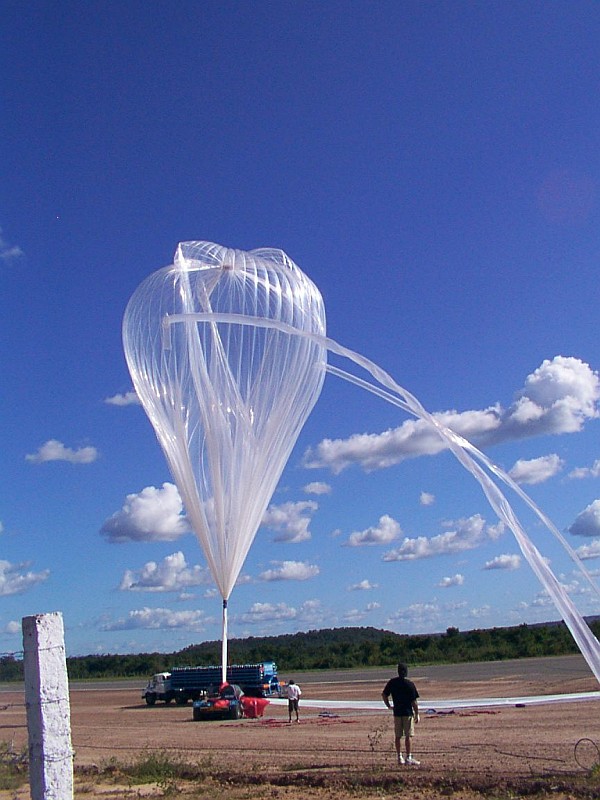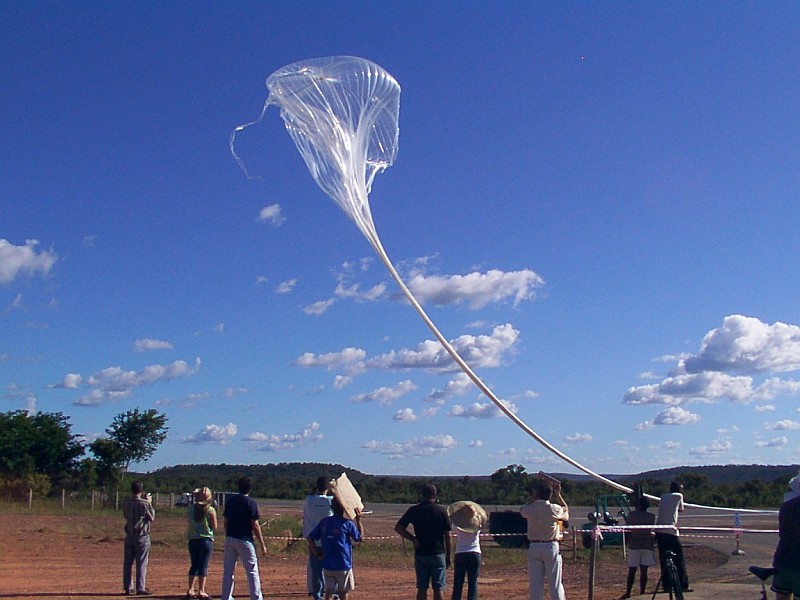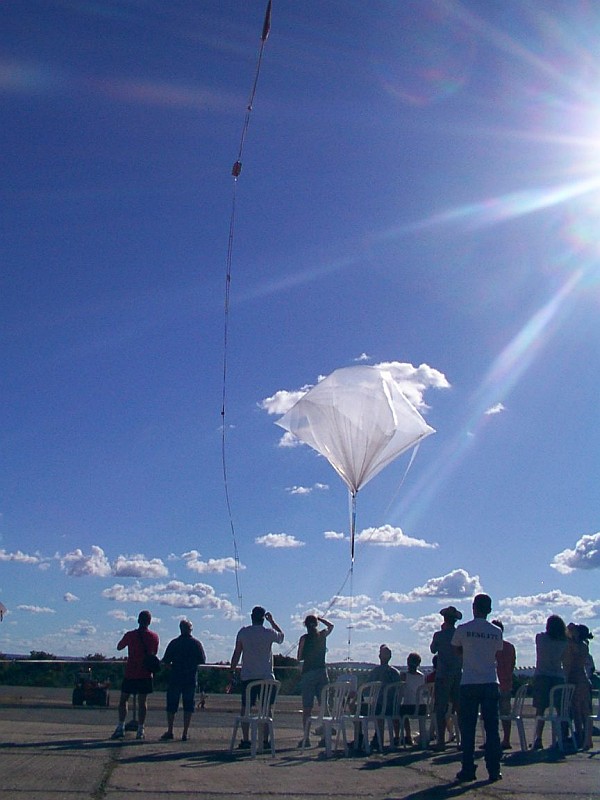Purpose of the flight and payload description
The LPMA instrument (Limb Profile Monitor of the Atmosphere) is a high spectral resolution Fourier transform spectrometer operating in absorption against the sun. The objective is to record limb atmospheric spectra in selected intervals from the thermal infrared to the near-infrared.
The instrument is composed by a commercial BOMEM DA2 spectrometer customized for balloon operations. A specially designed two detectors output optics enables to cover simultaneously two spectral regions making it possible to sample simultaneously the two interferograms detected during the same scan of the moving mirror and allowing to collect information on atmospheric species absorbing in widely different spectral regions.
In order to reach a good signal to noise ratio spectra performance, the interferometer must be feeded with a stable solar beam exactly aligned along the optical axis of the instrument. To be able to do this, two sub-systems of the gondola are needed:
- a primary pointing system initially developed by the Observatory of Geneva for astronomical payloads, controling the azimuth of the gondola and maintaining the sun in the field of view of the instrument even during ascent in the dense layers of the upper troposphere or lower stratosphere where this is a rather difficult achievement.
- a suntracker (also known as a heliostat) developed in cooperation with the Institut d'Electronique el de Micro-electronique du Nord performing the fine pointing of the acquisition mirror through 2 axes servo-controlled gimbal compensating for the residual motions of the payload and maintaining a jitter of the solar beam direction at the input of the interferometer of less than 1 arc min.
In addition it is possible to accomodate on the gondola another instrument of the class 30-50 kg wich can benefit from their good pointing capabilities. In this flight also was part of the scientific payload onboard the gondola the DOAS (Differential Optical Absorption Spectroscopy) consisting of 2 light intake telescopes for simultaneous Nadir and scanning Limb observations (the latter being mounted on an automated elevation scanner). The incoming light is conducted into two Ocean Optics USB-2000 spectrometers which are mounted into an evacuated and thermo-stated housing and controlled by a single board computer for data handling and storage.
The instrument was created to help in the validation of the SCHIAMACHY instrument onboard ENVISAT.
Details of the balloon flight
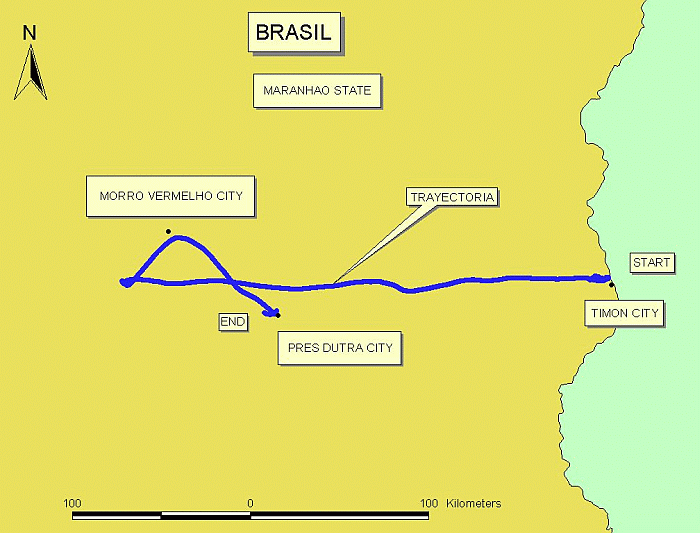
Balloon launched on: 6/17/2005 at 15:27 local
Launch site: Domingos Rego Aerodrome, Timón, Maranhao, Brazil
Balloon launched by: Centre National d'Etudes Spatiales (CNES)
Balloon manufacturer/size/composition: Zero Pressure Balloon model 150z Zodiac - 150.000 m3
End of flight (L for landing time, W for last contact, otherwise termination time): 6/17/2005 at 23:01 local
Balloon flight duration (F: time at float only, otherwise total flight time in d:days / h:hours or m:minutes - ): 8 h 6 m
Landing site: Between the cities of Presidente Dutra and Tuntum, Maranhao State, Brazil.
Campaign: ELBC (Equatorial Large Balloon Campaign)
Payload weight: 488 kg
Launch was on June 17 at 15:27 local time, by dinamic launch method assisted by auxiliary balloons.
The chronology of flight is as follows:
15:28 Starting of the primary pointing system
15:32 Starting of the scientific payload
17:15 Float altitude achieved (33.360 m, pressure 7.4 hPa)
18:15 Stop of the scientific payload
18:26 Starting of the slow descent
19:40 Stop of the primary pointing system
20:19 Low float altitude achieved (18.750 m, pressure 70 hPa)
23:01 Payload cut down (16.800 m, pressure 100 hPa)
23:33 Landing of the payload at (5º14'S - 44º35'W)
The payload returned to the launch base in good condition in the afternoon of the next day (June 18th)
Click in the graph at left to see a altitude/longitude/latitude chart recorded from the onboard GPS.
External references
- LPMA project website Laboratoire de Physique Moléculaire pour l'Atmosphère et l'Astrophysique (via Archive.Org)
- Stratospheric Research Group University of Heidelberg
- Balloon-borne stratospheric BrO measurements: comparison with Envisat/SCIAMACHY BrO limb profiles Atmos. Chem. Phys., 6, 2483-2501, 2006
- Balloons launched over Equatorial Brazil validate Envisat ESA website
- Bromine in the tropical troposphere and stratosphere as derived from balloon-borne BrO observations Atmospheric Chemistry and Physics, Volume 8, Issue 23, 2008, pp.7265-7271
- Constraints on inorganic gaseous iodine in the tropical upper troposphere and stratosphere inferred from balloon-borne solar occultation observations Atmos. Chem. Phys., 9, 7229-7242, 2009
- Investigation of Inorganic Stratospheric Bromine using Balloon-Borne DOAS Measurements and Model Simulations Doctoral Dissertation by Marcel Dorf, University of Heidelberg (2005)
2026If you consider this website interesting or useful, you can help me to keep it up and running with a small donation to cover the operational costs. Just the equivalent of the price of a cup of coffee helps a lot.

